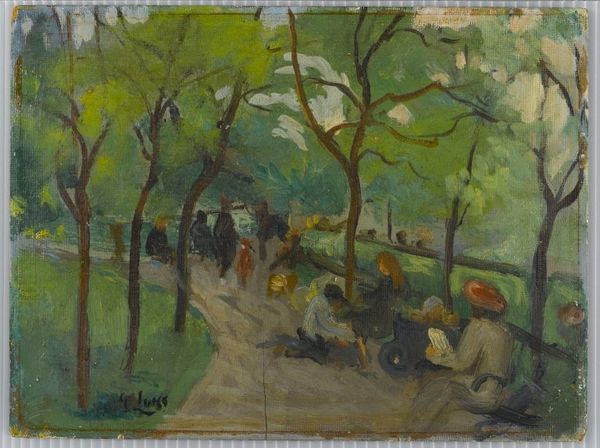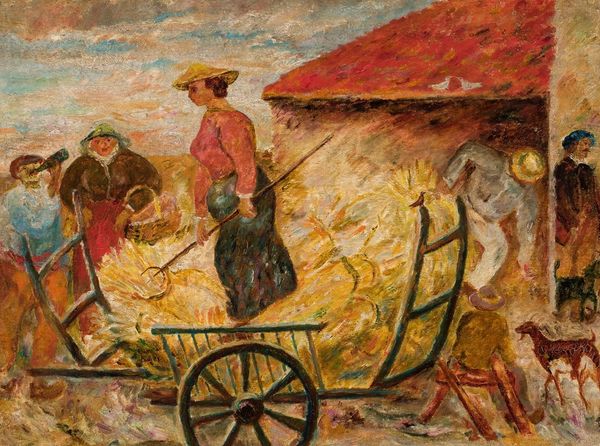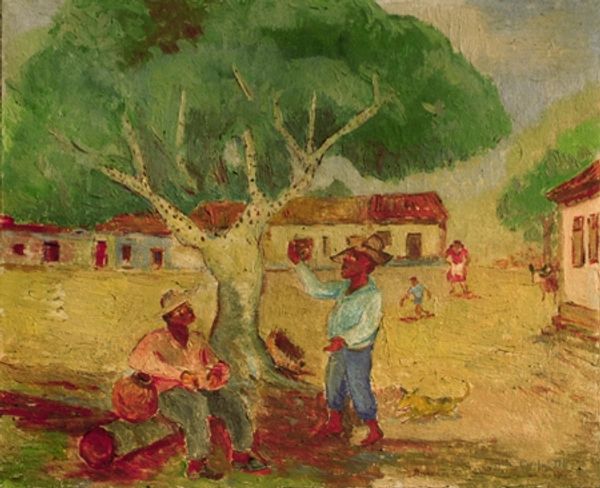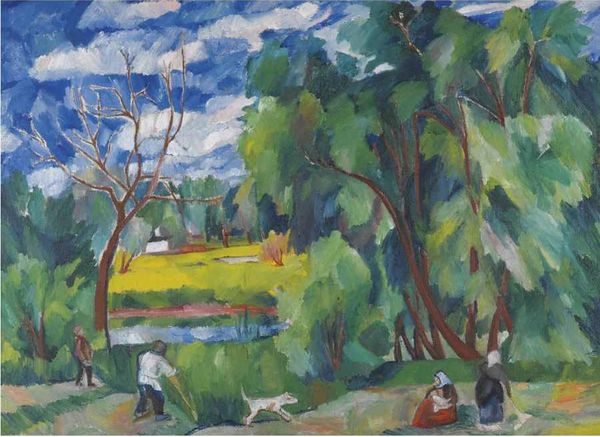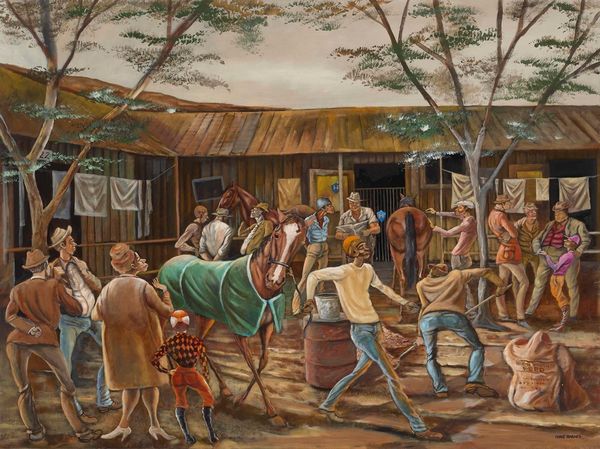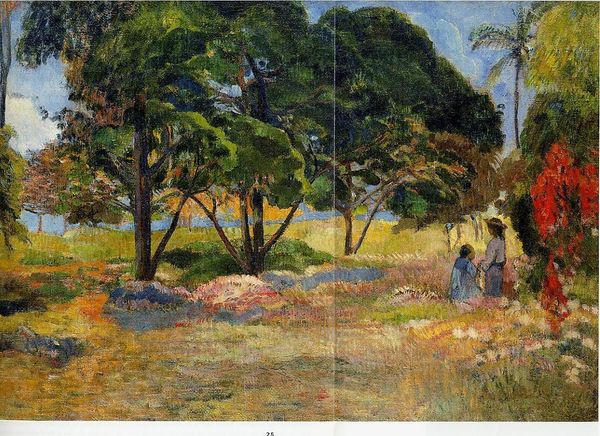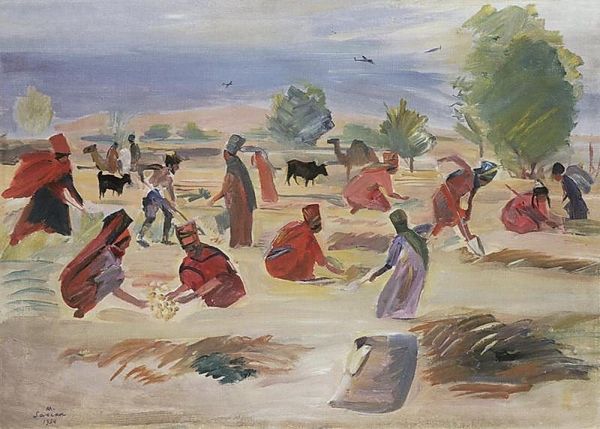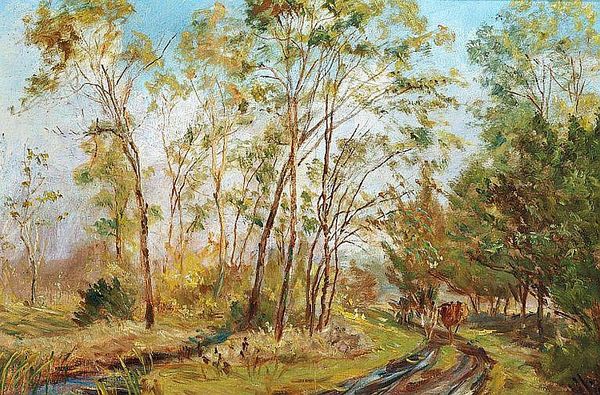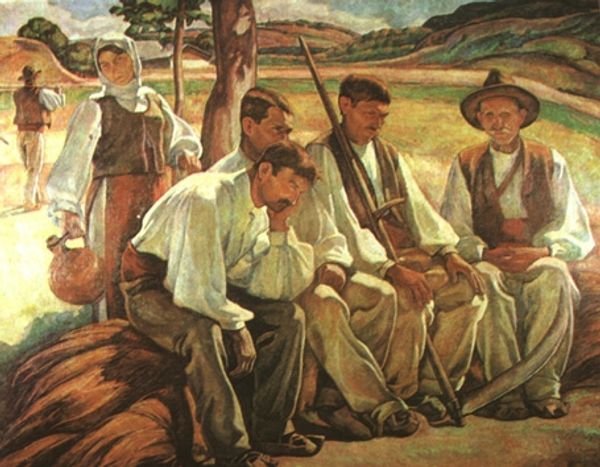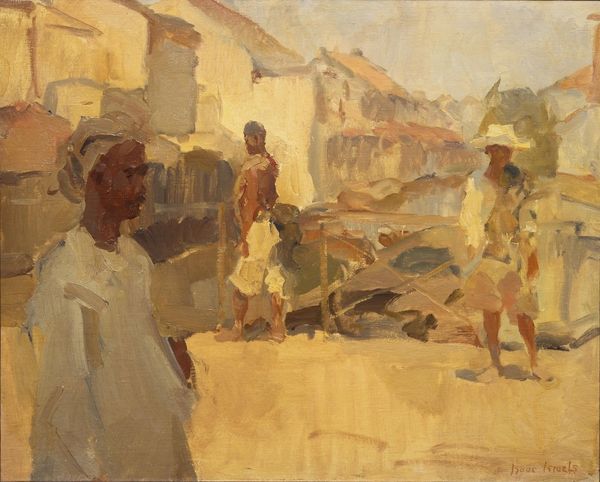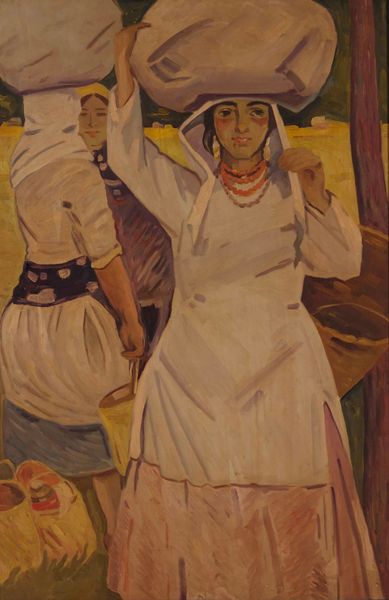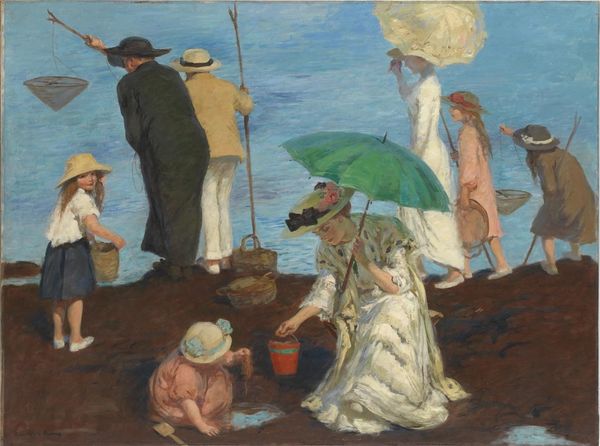
painting, plein-air, oil-paint, impasto
#
painting
#
plein-air
#
oil-paint
#
landscape
#
figuration
#
oil painting
#
impasto
#
group-portraits
#
genre-painting
#
realism
Copyright: Georgina de Albuquerque,Fair Use
Curator: Immediately I'm struck by how bright and airy this painting is! Despite the subject matter, there's a real lightness of spirit here. Editor: That’s "No Cafezal" from 1951, a genre painting rendered in oil by Georgina de Albuquerque. A landscape portraying workers using their hoes outdoors in plein air style, don't you think? Curator: Yes, there’s an almost idyllic quality to the scene, with the women working harmoniously together. But what do you make of their attire? Are they presented realistically as labourers or symbolically, in a way that romanticizes agricultural work? Editor: Considering Albuquerque's engagement with realism, I'm intrigued by the clothing and tools displayed, offering glimpses into the period's manufacturing and societal contexts, reflecting socio-economic strata via access to labor practices and the division of work as reflected in the gender. Curator: That's interesting! Because the composition leads my eye directly to their straw hats; they feel archetypal. Like protective symbols connecting them to the land and also suggesting that idealized labor. Editor: Agreed, but more grounded than an outright symbol: practical headwear to defend against the tropical sun. Note too how the impasto technique enhances our perception of texture of those hats! Georgina truly captured this particular social stratum. It’s a work where content reflects the materiality of production as a reflection on society! Curator: A connection between earth and individual experience seems at the heart of the visual rhetoric Albuquerque employs, that in this composition human and object fuse on some deeply primal level! It's fascinating how it bridges past with present realities... What is your final thought on the symbolic connection between materiality, labor, and representation displayed here? Editor: "No Cafezal" prompts me to further investigate into both the means by which raw resources become both commodities but also, and more compellingly, cultural statements. What begins simply on surface level as canvas plus color leads me towards wider considerations encompassing material presence into collective storytelling practices overall! Curator: Very well. Albuquerque offers potent and lingering meditations about place but it transcends through a time where materials became more meaningful; It seems this landscape is charged from its human value as source for collective identities to live through stories even nowadays.
Comments
No comments
Be the first to comment and join the conversation on the ultimate creative platform.
